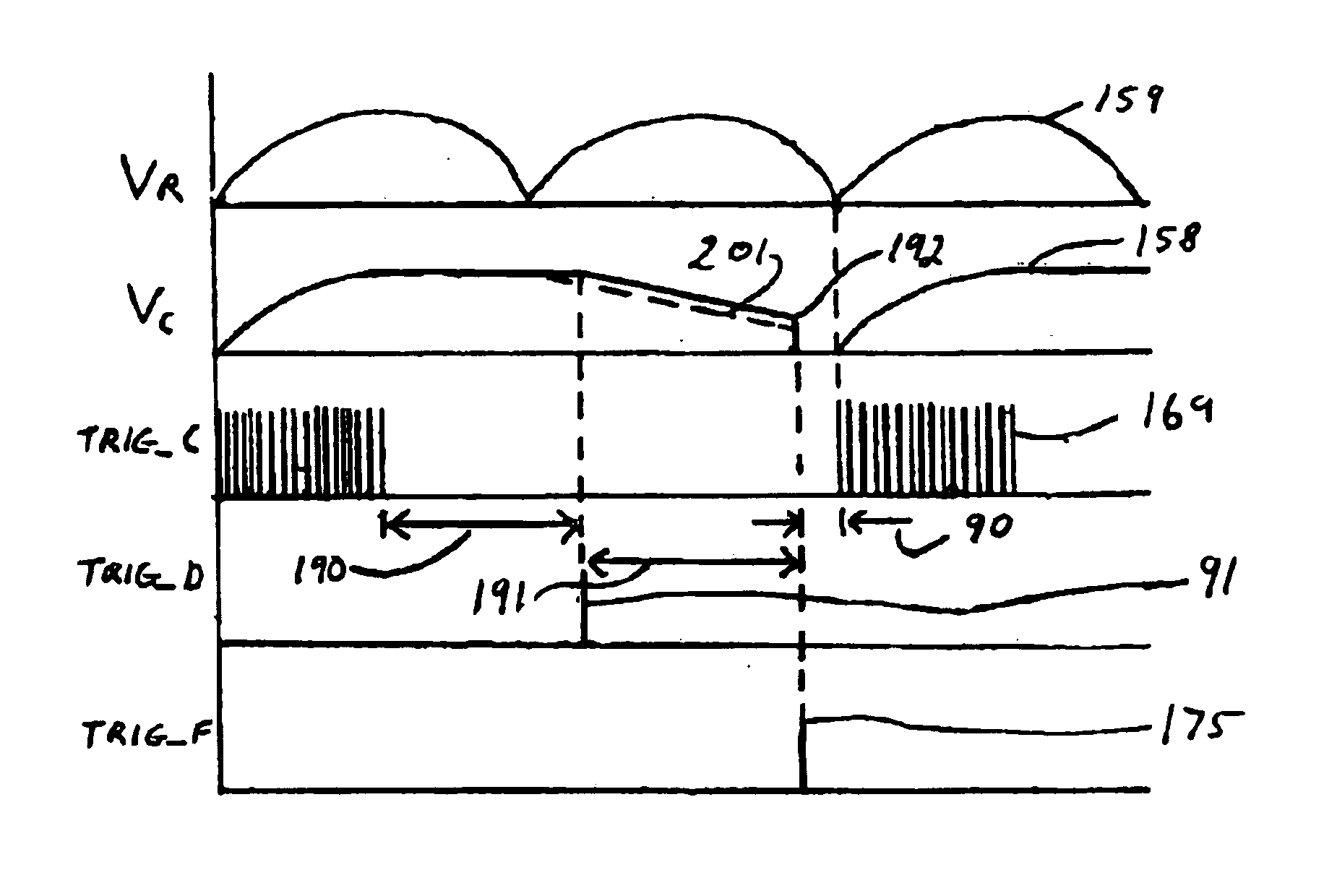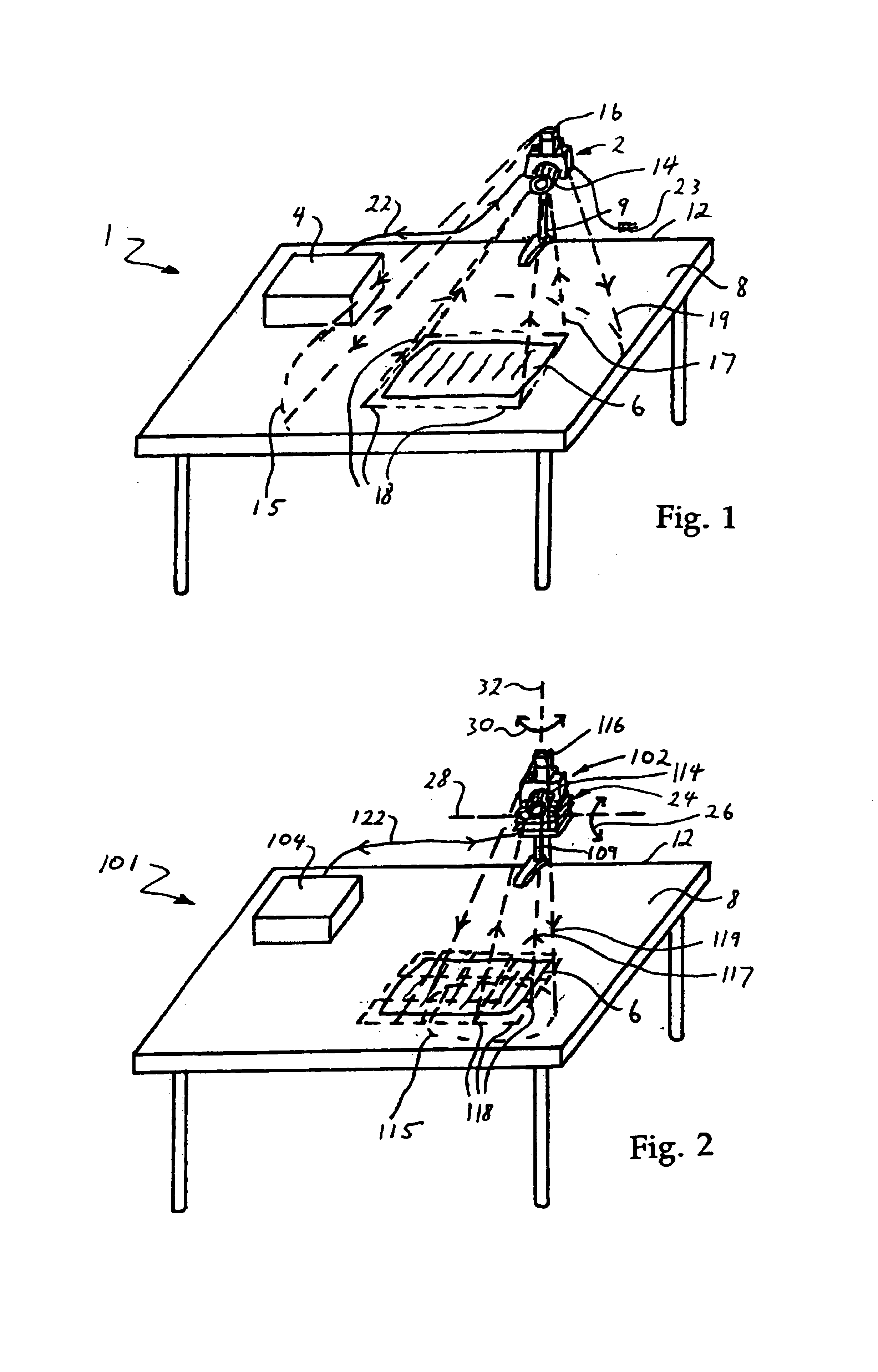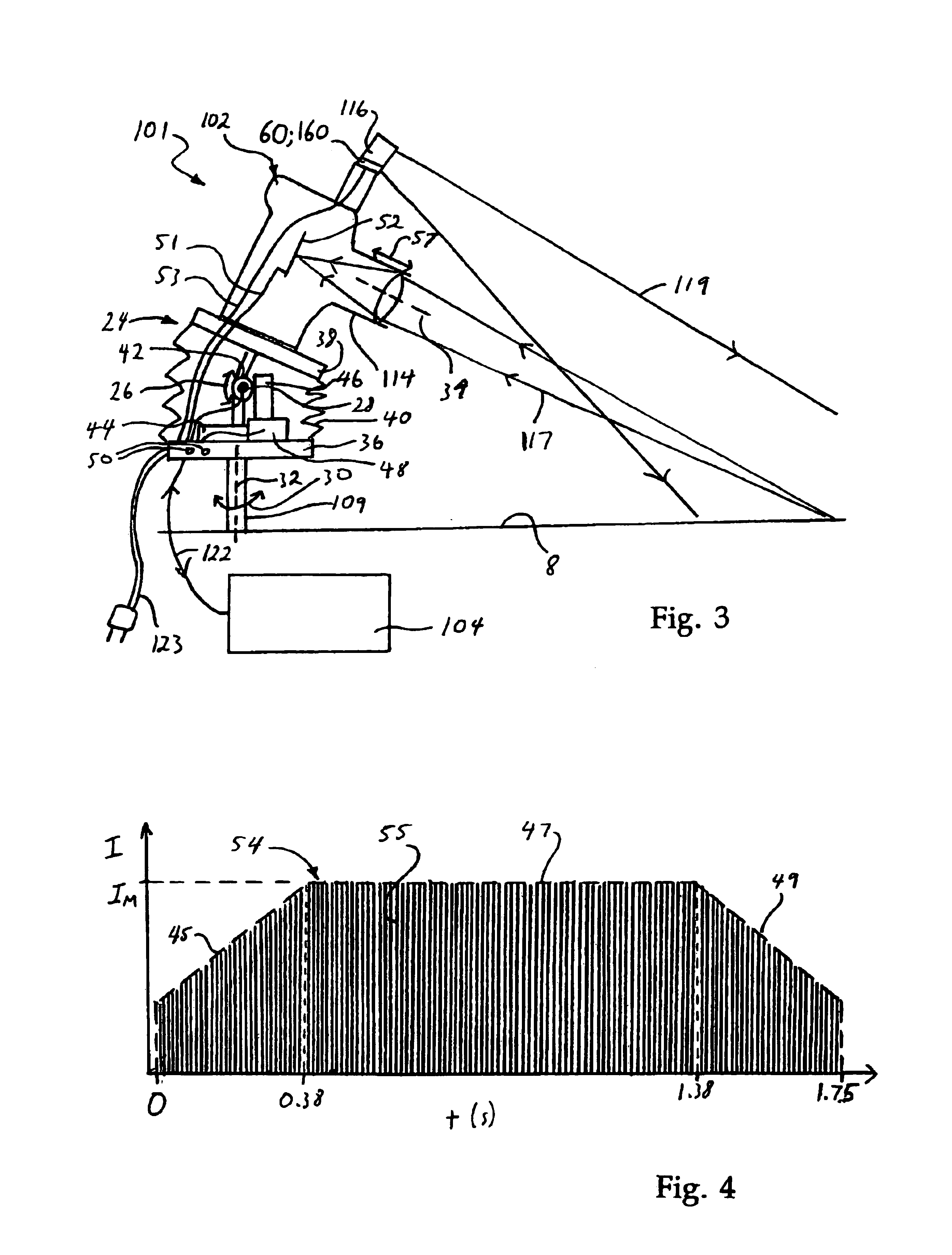Strobe flash photographic illumination
a technology of flash and flash light, applied in the field of flash flash illumination of cameras, can solve the problems of inconvenient use of conventional flash illumination in many environments, document scanner occupies a significant amount of desk space, and bright flash of light from such a unit can be startling or annoying to anyone nearby,
- Summary
- Abstract
- Description
- Claims
- Application Information
AI Technical Summary
Benefits of technology
Problems solved by technology
Method used
Image
Examples
first embodiment
FIG. 1 shows a document imaging system 1 according to the invention, comprising a camera 2 and a camera controller unit 4 that are arranged to image a document 6 lying on a work surface 8. The camera may be hand-held, but for convenience is mounted atop a post 9 affixed to an edge 12 of the work surface 8. The document will typically be an A5, A4 or A3 size document, for example a sheet of printed paper, an open book, or a photograph.
The camera comprises an objective lens 14 and a strobe flash unit 16, both of which are directed at the document 6. The lens 14 has a field of view 18 sufficiently wide so that the lens can receive optical radiation 17 to image the entire document 6 all at once. The strobe flash unit projects visible light 19 over an area 15 sufficiently wide that the document is uniformly illuminated. As will be explained in more detail below, the camera includes an image capture means, preferably an electronic detector (see FIG. 3 reference numeral 52) and the strobe ...
second embodiment
FIGS. 2 and 4 show the invention 101, in which identical features are labelled as in FIG. 1, and similar features are labelled with reference numerals incremented by 100.
The camera 102 differs from the first embodiment in that the lens field of view 118 and illuminated area 115 are narrower, and able to image only about one-twelfth of the document 6. An actuator 24 is therefore provided between the camera 102 and the post 110.
The actuator 24 has two degrees of freedom of motion 26, 30, one of which 26 is about a horizontal axis 28, and the other of which 30 is about a vertical axis 32. The horizontal axis is roughly transverse to an optical axis 34 of the lens 114. The degrees of freedom of motion 26, 30 permit the camera 102 to be moved so that the strobe flash unit 116 and lens 114 can respectively illuminate and image successively the all areas of the document 6. The degrees of freedom of motion 26, 30 need not be orthogonal, but in general it will be convenient if this is so.
The...
PUM
 Login to View More
Login to View More Abstract
Description
Claims
Application Information
 Login to View More
Login to View More - R&D
- Intellectual Property
- Life Sciences
- Materials
- Tech Scout
- Unparalleled Data Quality
- Higher Quality Content
- 60% Fewer Hallucinations
Browse by: Latest US Patents, China's latest patents, Technical Efficacy Thesaurus, Application Domain, Technology Topic, Popular Technical Reports.
© 2025 PatSnap. All rights reserved.Legal|Privacy policy|Modern Slavery Act Transparency Statement|Sitemap|About US| Contact US: help@patsnap.com



